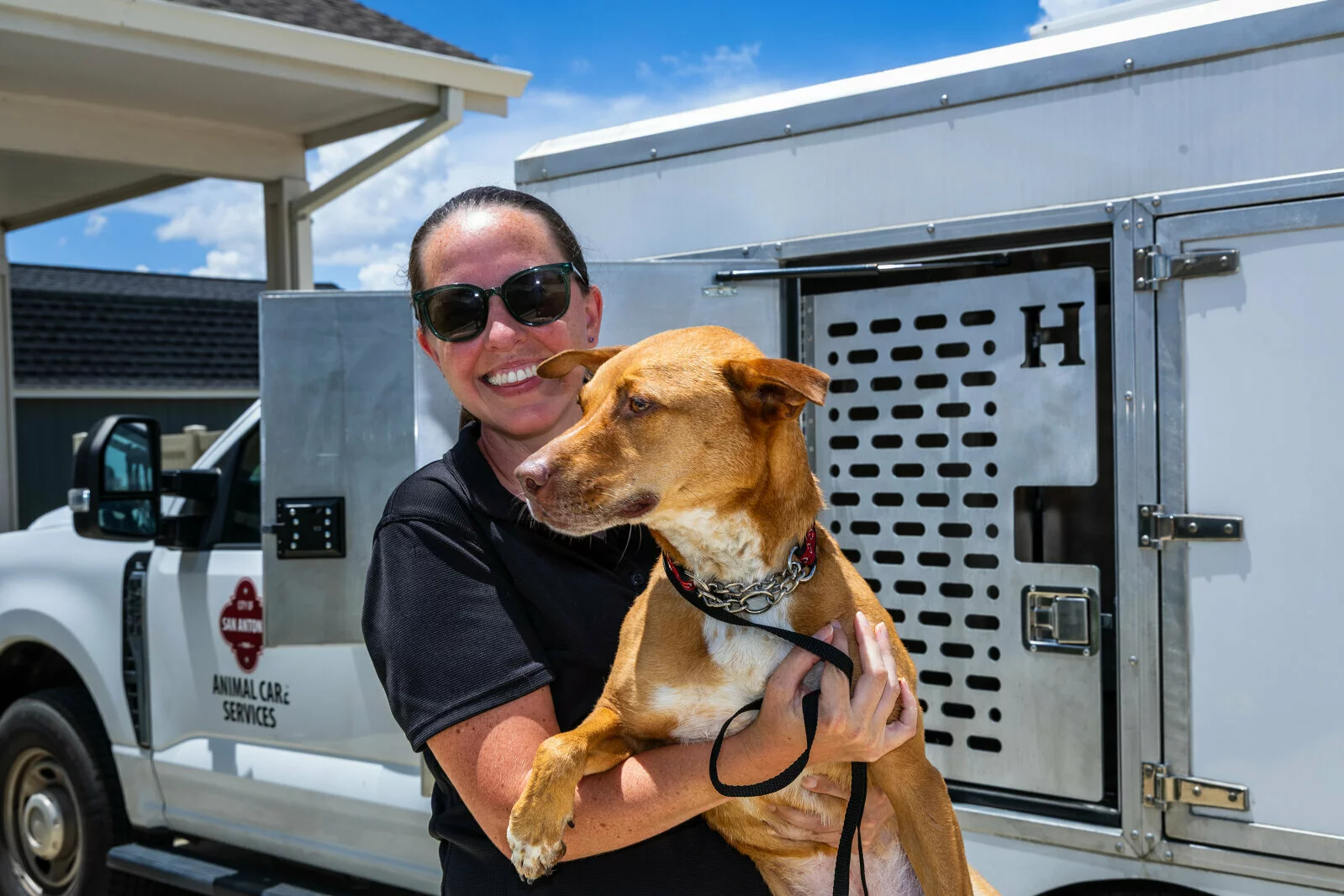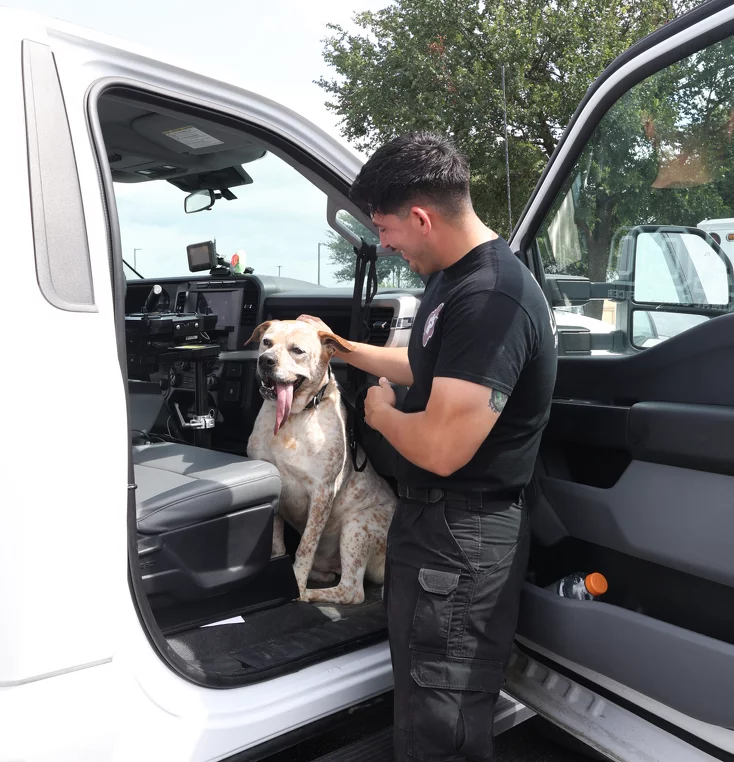Saving Lives Through Transport
Last week we transported more than 130 pets to Michigan from three overwhelmed shelters in Texas. While there was a great deal of excitement on behalf of all shelters that participated, I would like to clarify some misinformation. Transport is a vital tool in the lifesaving toolkit. When it’s done correctly, transport provides support for both source and destination communities. Even in a climate where the vast majority of shelters are full, transport is lifesaving and raises awareness for the plight of our animal shelters.
Our nation’s shelters are in crisis, and Michigan is no different. We are overburdened with large and behavioral dogs. The length of stay for large dogs is up, contributing to the nationwide crisis. It is a quandary because incredible pets are waiting in the shelter for a family and the only thing wrong with most of them is their size. The increased length of stay is creating havoc. The dogs are declining behaviorally and medically because our shelters were not built for long-term stays. While I understand that this may be a distressing set of facts, fifteen years ago length of stay was not an issue because high rates of euthanasia prevented any pet from a long-term stay. The animal welfare community has advanced, professionalized, and innovated, but now we have a new set of problems.
Yes, pets in Michigan shelters are being euthanized, and pets are still being transported into the state. This is not isolated to Michigan alone; pets are still moving all over the country where destination shelters are full. They are still creating room for transport. Here is why:
- For many years, destination shelters in Michigan, Wisconsin, Minnesota, New York, Connecticut, and other northern states have been transporting from source shelters in Louisiana, Mississippi, Alabama, Texas, and other southern states that desperately need relief. They have formed relationships and are committed to helping the shelters in that region. Many of these relationships are mentorship-based, drastically improving sheltering practices. The plight of these source shelters is heartbreaking, and we are committed to helping them as an industry.
- Destination shelters are constantly looking for solutions to find loving homes for large dogs and long-term pets in their care. Bringing the community into the shelter is the number one tool to save lives. An influx of highly adoptable dogs will bring them out in droves. Once in the shelter, all the pets get the opportunity to be seen. In many cases, pets not associated with the transport will be adopted—this is what we strive for!
- Small and medium dogs are adopted quickly in almost all shelters. The demand for these dogs is so great that even many high-intake shelters no longer need to transport this population out. They get adopted locally. There are still some shelters in our country where the volume of intake of these pets is beyond the demand locally. Moving these pets to destination shelters that are filled with large dogs is a benefit for both source and destination shelters. Diversifying the shelter population keeps the community coming back to the shelter.
- Do you know who else loves transport? The media. This type of attention brings awareness to the work our animal shelters are doing and drives people to them.
The myth that bringing in highly adoptable pets causes a local pet to be euthanized needs to be addressed. The community is not adopting the dogs that have been sitting in shelters for months. They are not even going to look because they dismiss our shelter population as “all bully mixes and large dogs.” They may be right, but we can change hearts and minds once they see these dogs and what great pets they can be. However, first, we must get them in the door. Next, we must change our message about the dogs waiting in shelters to a positive one to truly support our shelters. The pit bull in Detroit that has been in the shelter for three months will not be euthanized because someone adopts a Jack Russell mix in Harbor Springs. But that person that adopted the Jack Russell mix will tell friends and family they found him/her in the shelters, sending them to look in their local shelter. Who knows, they may fall in love with a long-timer. Again, diversification gives shelters a chance to highlight all the pets.
Complaining about the problem on social media is not helping. We must push forward. Let’s use all our platforms to make big dogs trendy and draw people into shelters to adopt, foster and participate. Please, if you have the time to perpetuate the myth that transport is hurting shelters, you have time to post why a big dog makes a great pet. You also have time to write to your local officials and ask them to please remove housing restrictions for pets for all public housing and push rental management companies to do the same. This is the root of the issue.
Finally, let’s also address the elephant in the room. Some shelters need to improve practices before the community engages with them. We are in a new age of animal sheltering where we must break down barriers to adoption and take a social services approach to animal control. If all our agencies worked to get pets home rather than to the shelter, we could drastically reduce the number of incoming pets. If shelters employed programs to help pet owners rather than penalize them, they would learn to trust and ask for help. Ending transport will not solve the problems in our nation’s animal shelters; updating animal control practices and supporting the community will.




